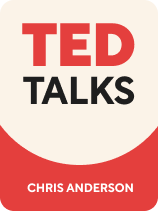

This article is an excerpt from the Shortform book guide to "TED Talks" by Chris Anderson. Shortform has the world's best summaries and analyses of books you should be reading.
Like this article? Sign up for a free trial here .
Do you have an important speech coming up? How do you plan a speech for maximum impact and effectiveness?
In terms of planning, all speeches fall into one of four categories: 1) scripted and memorized, 2) scripted and read, 3) unscripted but planned out, and 4) unscripted and winged. You should never come unprepared, otherwise, you run the risk of your speech not being high-quality—and even if it is, your lack of preparation is disrespectful to the audience’s time and attention.
Learn how to plan a speech based on its style, the pitfalls you should avoid, and the best way to rehearse. We’ll also cover tips on how to open and close your speech.
Category 1: Scripted and Memorized
Benefits: You can ensure that there’s time for everything you want to say; you can choose your words carefully; and you can practice your speech on other people, which allows for feedback and improvement. (Shortform note: For people who suffer from an intense fear of public speaking (glossophobia), scripting and memorizing is the favored option because it gives a feeling of control and preparation.)
Risks: Memorized speeches can come across as dry and unengaging. Even though your audience knows that your thoughts are scripted in one way or another, they like to feel as if they’re part of the moment as it unfolds naturally. Anderson explains that this is similar to how people prefer to watch sports live rather than recorded—they want to believe that they’re part of the action. (Shortform note: While inspiring your audience is the ideal result, those with the most severe forms of glossophobia might be trying to just make it through the speech without panicking or feeling humiliated. If this is you, getting through the speech is more important than avoiding the risks Anderson mentions here.)
Rehearsal: If you decide to memorize your speech, Anderson says you have to really commit. In the beginning of rehearsal, the speech will come out passionately but not super smooth. Once you reach the memorization point, the speech will come out smoothly—so smoothly in fact, that it will lack character. It will be flat and without passion. This is where most people stop practicing, which Anderson says is a mistake. If you push past this stage of memorization and continue to practice, you’ll eventually get to a point where you know the speech so well that you’re no longer concentrating on the words and the passion will return to your voice.
Bottom line: Don’t stop practicing your speech once you’ve memorized it—keep going until you have fully embodied it. Anderson says you’ll know you’re ready when you can recite your entire speech while doing another cognitively demanding task (solving math problems, for example).
(Shortform note: Proponents of this method include Jill Bolte Taylor, Brené Brown, and Amanda Palmer. Bolte Taylor says she rehearsed her TED talk over 200 times, and Palmer says she practiced over a period of four months.)
Category 2: Scripted and Read
Benefits: Anderson says there are two occasions when reading your speech works well: First, if the speech is paired with gorgeous imagery and your audience’s eyes are on your images instead of you. Second, if you’re a gifted writer and the audience understands that they’re hearing a piece of written work. (Shortform note: With the right tools (such as a teleprompter) and lots of practice, you can master reading without drawing attention to yourself. We discuss these tools in Part 5.)
Risks: There are three major risks if you choose to read your speech: First, your audience might not trust your authenticity. Second, they might perceive you to be unprepared. Third, your audience might become so bored that they tune you out or leave. (Shortform note: Despite these risks, reading a speech might be the better option if you don’t have time to memorize it, especially in situations where your authenticity isn’t going to be doubted—for example, eulogies at funerals are usually read, not memorized.)
Rehearsal: If you’re a writer reading a written work (such as a poem), Anderson recommends you still know your speech well enough that you can look up at your audience from time to time and so your voice will sound natural. He adds that with read speeches, it can be especially impactful if you stand up at the end and deliver your last paragraph without reading. (Shortform note: Amanda Gorman balanced reading and looking up at the audience—to great effect—while reading her poem, “The Hill We Climb,” at President Biden’s inauguration ceremony.)
Category 3: Unscripted (But Planned Out)
Benefits: The speech is passionate, fresh, and in the moment. Anderson says the audience feels your authenticity and wants to go on the journey with you.
Risks: With this much flexibility in your wording, you risk using too much jargon, not fully explaining difficult concepts, rambling, and running out of time.
How to prepare: Even with an unscripted speech, rehearsing is crucial. While you aren’t planning out exact words to use, you do need a structure to keep you on track. Start by identifying the point you’re trying to make (your “big idea”), then decide how you’ll get there. (Shortform note: Those who don’t want to write a script might prefer a graphic organizer instead. A “mind map” is a visual representation of where you’re starting, where you want to go, and the stops you’ll need to make along the way. Draw it out like a literal map with your opening and closing statements, your big idea, and the concepts that lead to your idea.)
To keep your words spontaneous but still be fully prepared, Anderson recommends you do the following:
- Practice different ways to explain each concept. This way, if your brain fails to remember one, you have others to fall back on.
- Prepare transition phrases between each point. This will keep you from skipping a section and helps you move on to the next point if your mind goes blank.
- Practice using only 90% of the time you’ve been assigned to prevent running over time (which is stressful for the organizers and the audience). Know what your halfway point is and keep an eye on the clock to make sure you’re on pace.
- Script your opening and closing lines to give it a polished touch.
- Don’t rely on your slides to jog your memory, and don’t put words on your slides that you plan to speak. Audiences hate this.
| Answer Key Questions Try writing out all of the key questions that your speech will answer and then verbally answering them in several different ways. Make sure the questions are open-ended. For example, if you’re giving a congratulatory toast at a wedding, your questions might look something like this: How do I know the groom? How do I know the bride? What do I love about the two of them together? Why do I know their marriage will be successful? Who is the stubborn one? Who is sentimental? What should they each remember about the other? Practice answering these questions in several different ways. When you go to deliver your speech, there will be no surprise answers coming out of your mouth. |
How to Open a Public Speech
Your opening sets the tone for the rest of the talk, so even if you choose not to script your speech, you should carefully plan your opening.
Here are some tips on how to plan a speech opening that grabs your audience from the beginning:
1) Think of something dramatic to say: Anderson says you can never go wrong with a powerful opening line—or at the very least, a powerful line within your first paragraph. Don’t think of your speech as having to be sequential. He recommends you take the heart of what you’re going to talk about and come up with one statement to use as a teaser to the audience.
2) Prepare a fascinating image (or object): Sometimes, the best way to get an audience’s attention is to show them something stunning, confusing (in an intriguing way), or hilarious. Once you delight the audience, you have their attention.
3) Pique their curiosity: Sparking curiosity is the easiest way to grab and hold a listener’s attention. Anderson says you can ask a question explicitly, or you can make a counterintuitive statement. If what you say challenges the audience’s prior knowledge, it will intrigue them even more.
Closing
Anderson warns that a spectacular talk can be ruined by a bad ending. The way a talk ends is the way the audience will remember it. Avoid boring endings, asking for money, or alluding that there was more you couldn’t get to.
Instead, Anderson offers these five strategies for ending your talk on a high note:
- Apply what you’ve discussed to a broader situation. For example, “If this management style can transform Fortune 500 companies, imagine what it could do in the White House.”
- Declare a personal mission. End your speech by making a proclamation about how you are going to use this knowledge to improve the world.
- Leave them with a dream. Paint a picture of a better world. Inspire your audience with your dream for the future, but be sure to avoid clichés.
- Call them to action. Ask your audience to take the information you just gave them and do something with it. For example, “If we all contact our congressmen, they’ll have to listen.”
- End with beautiful language. A poetic statement, song lyric, or eloquent phrase can add a somber and memorable touch.
Anderson says whichever way you choose to end your talk, a short and simple “thank you” (followed by a pause for applause) before walking offstage is always successful.

———End of Preview———
Like what you just read? Read the rest of the world's best book summary and analysis of Chris Anderson's "TED Talks" at Shortform .
Here's what you'll find in our full TED Talks summary :
- A nuts-and-bolts guide to public speaking that takes you from the initial idea to your final bow
- TED curator Chris Anderson's public speaking advice on everything from scripting to wardrobe
- A comparison of Anderson's advice to that of other public speaking experts






